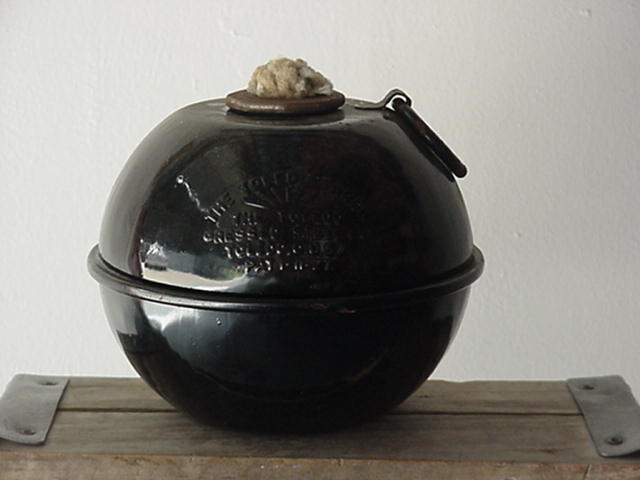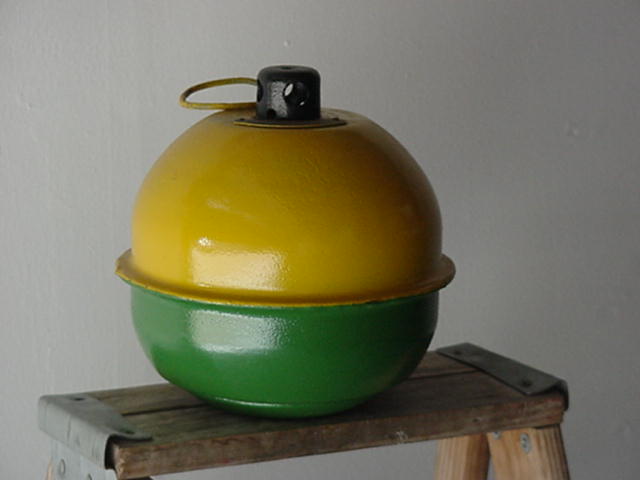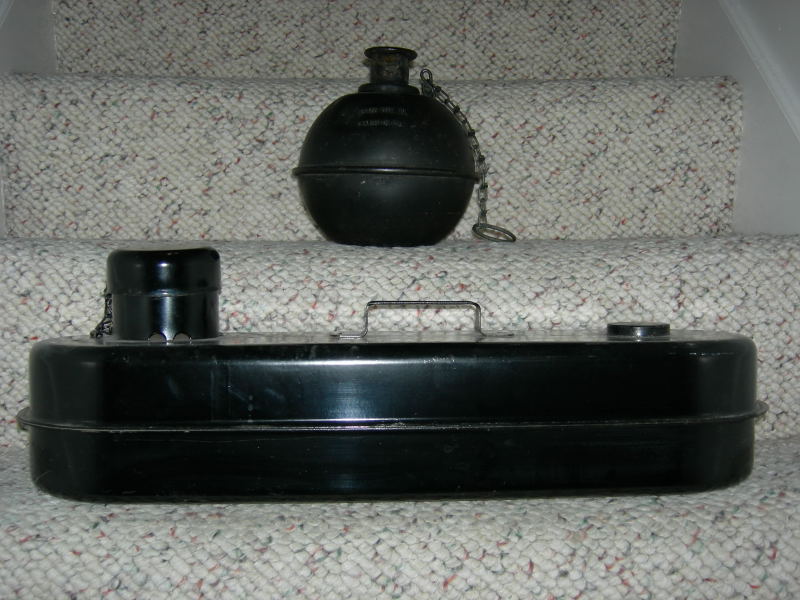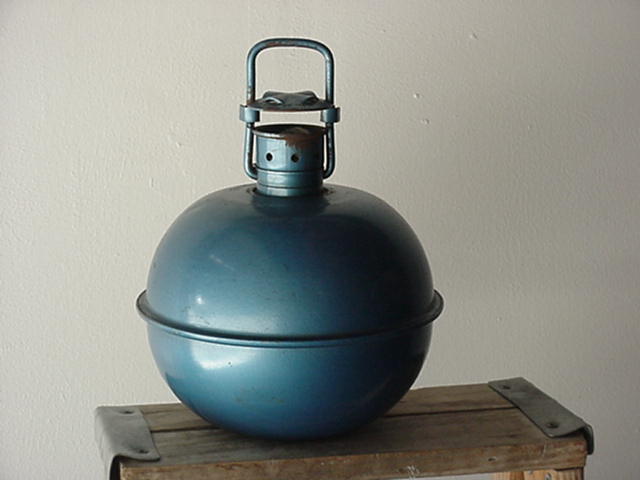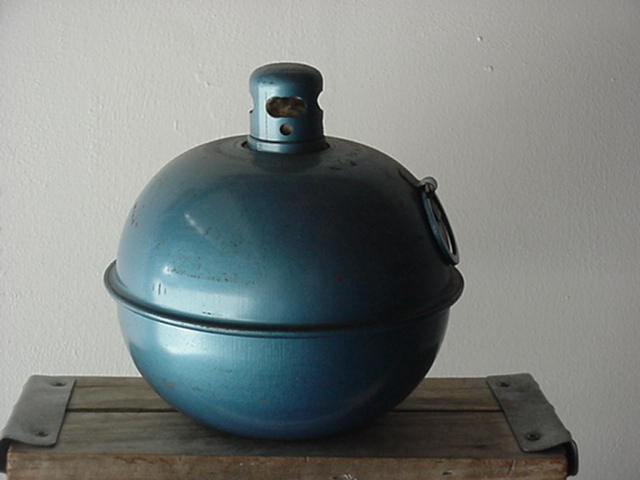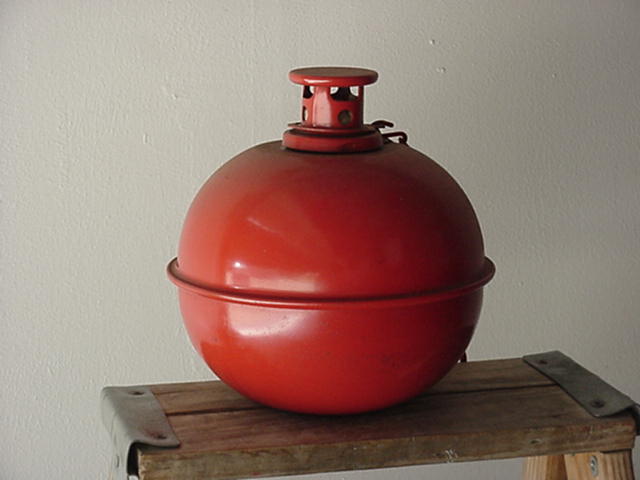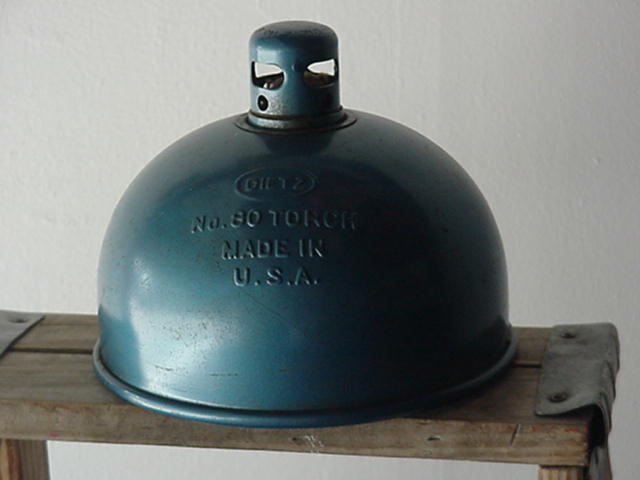You've see them everywhere - the kerosene burning road torches that look like you would imagine a bomb should look - but did you know that Toledo is the birthplace of the road torch, and more than ten million of them have been made since 1929?
Actually, a prototype of the present road torch was in use several years before 1927, and when the late Lyman W. Close founded the Toledo Pressed Steel Co. in 1925, the company began producing them in the Toledo Factories Bldg. for another firm. The first torches had a fault however - they blew out in the wind.
The Pressed Steel began engineering improvements that made the torch practical. The final design, which was patented in 1927, is the secret that made the Toledo Torch, as it is called, popular for marking construction sites all over the world. Manufacture of the finished product involves 28 operations.
The first production was a threaded wick holder with no hood and the high winds and traffic would blow out the flame. So the next step was to design a hood that would protect the flame from being blown out. The first hood had square holes at the top with round holes below; the later hoods had oval holes above and small holes below.
Toledo Torches had two ways to show ownership or who sold them. First was by being stamped into the metal, or by having an oval patch spot-welded onto the top. Torched that are marked in this manner are rare.
Ed Note - Toledo Highway Torch Models:
|
Model |
Capacity |
Body |
Seam |
Style |
Hood |
Lbs/doz |
|
620 Leader |
3 qts. |
20 ga. |
Mech. |
Round |
Thread |
62 |
|
5620 Victor |
3 qts. |
20 ga. |
Mech. |
Round |
Camlock |
62 |
|
630 Champion |
3 qts. |
14 ga. |
Weld |
Round |
Thread |
83 |
|
651 Model A |
6-1/2 pts. |
20 ga. |
Mech. |
Flat |
Thread |
34 |
|
5651 |
6-1/2 pts. |
20 ga. |
Mech. |
Flat |
Camlock |
34 |
Both the Toledo and Dietz torches have different diameter threads. The Dietz torch hoods are even with the hood where the Toledo hood threads flare out about 1/8” at the bottom. But the holes are the same size on both.
The Toledo torch wick holder will fit the Dietz #750-751 cam-lock, the Embury #750 Luck-E-Lite and the Anthes Flame Gard torch but it has about 1/8” play in it.
The Toledo Torch and the Dietz #87-1940 wick holders are a different diameter. The Dietz torch is about a 1/4” smaller on that part.
The Dietz #87-1940 wick holder and threaded hood are interchangeable with the old McClosky 1926 torch.
The Toledo Torch wick holder fits perfect in a Handlan torch but the Handlan torch has a totally different threaded hood.
The early Dietz #96 torch has no inner ring to hold the wick holder so it can only use the #96 burner.
The early Dietz #96 and the Shanklin torch have one thing in common, the wick holder and the torch hood are one piece. They are a hassle to clean. You have to remove the wick in order to clean the hood.
The Handlan torch hood has bigger holes than any other torch.
The Anthes Flame Gard hoods are a hassle too being that they have a square hood and rain guard on top just like the Dietz #750-751.
Thanks to Steve Hillyer!
|
|
|
|
